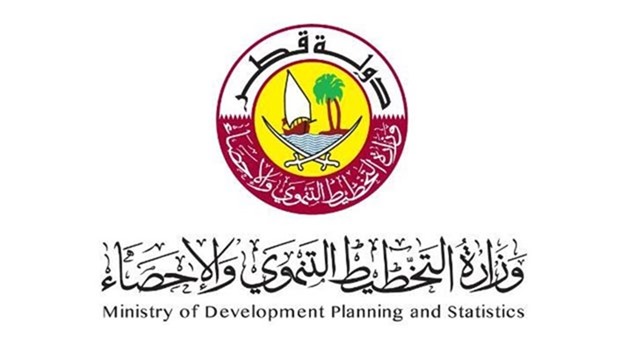Qatar's trade surplus expanded about 28% year-on-year to QR35.83bn in the fourth quarter (Q4) of 2017 as exports grew faster than imports, according to the official figures.
The country's trade surplus for the entire 2017 saw a 49% year-on-year growth to QR136.83bn as exports witnessed double-digit growth, while imports were on the decline, the Ministry of Development Planning and Statistics said.
During Q4, 2017, the country's exports grew 21% to QR68.47bn, mainly due to higher shipments of mineral fuels, lubricants and related materials and manufactured goods.
Imports were up 14% to QR32.64bn in Q4, 2017, on account of higher intake of machinery and transport equipment, food and live animals and chemicals and related products.
Asia was the principal destination of Qatar’s exports and the first origin of Qatar’s imports, representing 81.7% and 33.1% respectively; followed by the European Union or EU (10.1% and 25.9%) and the Gulf Co-operation Council (3.8% and 7%).
Among Asia, Japan was the major destination of the exports with QR11.7bn (17.1% of Qatar’s total exports), followed by South Korea QR11.1bn (16.2%) and India QR9.5bn (13.8%); whereas China was the principal origin of imports with QR4bn (12.2% of total), India QR2bn (6%) and Japan QR1.5bn (4.5%).
The foreign merchandise trade balance with this economic area amounted to QR45.2bn, while the total trade (exports plus imports) was QR66.8bn.
Exports to Asia were dominated by liquefied natural gas (LNG), crude oil, condensates and petrochemicals; while imports comprised principally vehicles, telephones for cellular networks, iron ores, jewellery of gold and rice.
Within the EU, the UK was the major destination during Q4 2017, reporting exports of QR1.5bn (2.1% of total), Italy QR1.3bn (1.9%) and the Netherlands QR1bn (1.4%). Imports from Germany were at the top with QR2bn (6.2% of total), Italy QR1.3bn (4.1%) and the UK QR1.3bn (4%).
During Q4, 2017, the foreign merchandise trade balance with the EU showed a deficit of QR1.5bn, while total trade amounted to QR15.4bn.
Exports to the EU were mainly LNG, polyethylene, halogenated olefins, helium, aluminium alloys and urea; while imports included principally vehicles, parts of airplanes or helicopters, medical solutions, parts for turbo jets or turbo propellers, jewellery of platinum and iron ores.
Among the GCC countries, the UAE was the major destination during Q4 2017 reporting exports of QR1.4bn (2.1%), followed by Kuwait QR0.6bn (0.9%) and Oman QR0.6bn (0.9%). Imports from Oman were at the top of the GCC countries at QR1.2bn (3.7%), Kuwait QR0.4bn (1.3%) and the UAE QR0.6bn (1.9%).
Foreign merchandise trade balance with the GCC countries registered a surplus of QR0.3bn, while the total trade was QR4.9bn.
Exports to the GCC countries comprised principally LNG, bars and rods of iron or non-alloy steel, polyethylene, jet fuel, ethane and halogenated olefins; while imports included iron ores, pebbles, gravel, broken or crushed stone, calcium carbonate and poultry.
During Q4 2017, surpluses were registered in the foreign merchandise trade balance with other Arab countries, QR0.1bn (0.2%) and non-Arab African countries QR0.2bn (0.4%).
A deficit was registered in the merchandise trade balance with the US at QR6.7bn, other European countries (not in the EU) QR0.9bn, other American countries QR0.5bn and Oceania countries QR0.3bn.
During Q4, 2017, the country's exports grew 21% to QR68.47bn, mainly due to higher shipments of mineral fuels, lubricants and related materials and manufactured goods.
Imports were up 14% to QR32.64bn in Q4, 2017, on account of higher intake of machinery and transport equipment, food and live animals and chemicals and related products.
Asia was the principal destination of Qatar’s exports and the first origin of Qatar’s imports, representing 81.7% and 33.1% respectively; followed by the European Union or EU (10.1% and 25.9%) and the Gulf Co-operation Council (3.8% and 7%).
Among Asia, Japan was the major destination of the exports with QR11.7bn (17.1% of Qatar’s total exports), followed by South Korea QR11.1bn (16.2%) and India QR9.5bn (13.8%); whereas China was the principal origin of imports with QR4bn (12.2% of total), India QR2bn (6%) and Japan QR1.5bn (4.5%).
The foreign merchandise trade balance with this economic area amounted to QR45.2bn, while the total trade (exports plus imports) was QR66.8bn.
Exports to Asia were dominated by liquefied natural gas (LNG), crude oil, condensates and petrochemicals; while imports comprised principally vehicles, telephones for cellular networks, iron ores, jewellery of gold and rice.
Within the EU, the UK was the major destination during Q4 2017, reporting exports of QR1.5bn (2.1% of total), Italy QR1.3bn (1.9%) and the Netherlands QR1bn (1.4%). Imports from Germany were at the top with QR2bn (6.2% of total), Italy QR1.3bn (4.1%) and the UK QR1.3bn (4%).
During Q4, 2017, the foreign merchandise trade balance with the EU showed a deficit of QR1.5bn, while total trade amounted to QR15.4bn.
Exports to the EU were mainly LNG, polyethylene, halogenated olefins, helium, aluminium alloys and urea; while imports included principally vehicles, parts of airplanes or helicopters, medical solutions, parts for turbo jets or turbo propellers, jewellery of platinum and iron ores.
Among the GCC countries, the UAE was the major destination during Q4 2017 reporting exports of QR1.4bn (2.1%), followed by Kuwait QR0.6bn (0.9%) and Oman QR0.6bn (0.9%). Imports from Oman were at the top of the GCC countries at QR1.2bn (3.7%), Kuwait QR0.4bn (1.3%) and the UAE QR0.6bn (1.9%).
Foreign merchandise trade balance with the GCC countries registered a surplus of QR0.3bn, while the total trade was QR4.9bn.
Exports to the GCC countries comprised principally LNG, bars and rods of iron or non-alloy steel, polyethylene, jet fuel, ethane and halogenated olefins; while imports included iron ores, pebbles, gravel, broken or crushed stone, calcium carbonate and poultry.
During Q4 2017, surpluses were registered in the foreign merchandise trade balance with other Arab countries, QR0.1bn (0.2%) and non-Arab African countries QR0.2bn (0.4%).
A deficit was registered in the merchandise trade balance with the US at QR6.7bn, other European countries (not in the EU) QR0.9bn, other American countries QR0.5bn and Oceania countries QR0.3bn.


